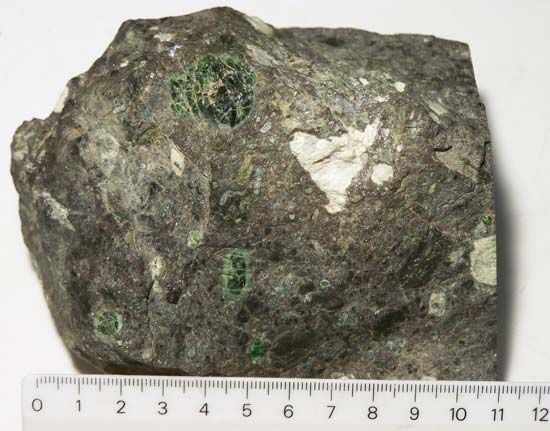kimberlite
- Also called:
- blue ground
kimberlite, a dark-coloured, heavy, often altered and brecciated (fragmented), intrusive igneous rock that contains diamonds in its rock matrix. It has a porphyritic texture, with large, often rounded crystals (phenocrysts) surrounded by a fine-grained matrix (groundmass). It is a mica peridotite, and its most abundant mineral constituent is olivine. Other abundant minerals include phlogopite mica; chromium- and pyrope-rich garnet phenocrysts; chrome-bearing diopside, particularly in the African kimberlite; ilmenite; serpentine; calcite; and magnetite. Kimberlite, along with a similar rock called lamproite, is important for delivering diamonds to the crust through magmatic intrusions that solidify into pipelike structures.
Kimberlite occurs in the uplifted centres of continental platforms. In the Kimberley district, South Africa, it forms pipes (funnels, more or less oval in cross section, that become narrower with increasing depth) and, occasionally, dikes. Other occurrences include the dikes at Ithaca, N.Y., the Kimberley and Lake Argyle regions of Australia, and the lavas in the Iswisi Hills, Tanzania.















